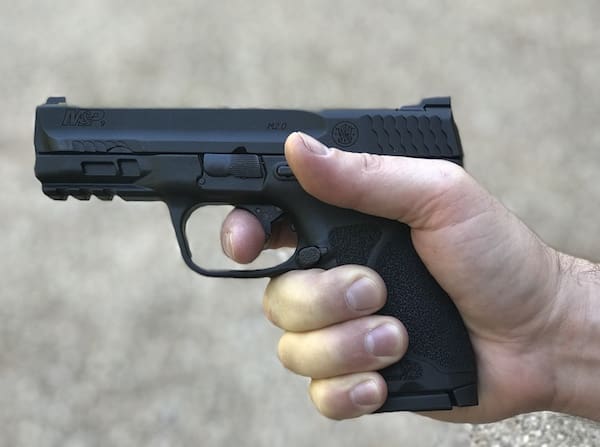
Most of the problems people have with accuracy are due to improper trigger management. Each shooter may experience slightly different errors, but they generally fall into three categories: placement, position or movement.
Most modern firearms — not 1911’s — use a trigger based on a lever design. Placing your finger lower on the trigger gives you more leverage and leverage equals power.
Power makes it easier to move the trigger smoothly through all its stages. It also minimizes the “stall point” or “wall” that can occur as you pull the trigger to its break point.
Trigger finger placement — which part of your finger you place on the trigger shoe — is critical to good trigger management and thus, to accuracy.

Most shooters place too little of their finger on the trigger shoe. Many position their finger on the trigger shoe so that it sits just before the first distal joint (a.k.a., crease). Placing your finger deeper on the trigger gives you more of the pulling power mentioned above.
But there’s a potential danger to that advice. Depending on the gun and your hand and finger size, your trigger finger may rub against the side of firearm’s frame. Applying pressure to the frame while pulling the trigger will shift the point of impact.

Position as much of your finger on the shoe as you can without rubbing the side of the frame. But remember to place your finger on the trigger face. Riding the trigger’s edge may pull the shot off target.
Modern striker-fired pistols have three stages; slop, slack and squeeze. The slop is the free travel or take-up. Slack is the incremental movement up to the sear wall. The squeeze is what breaks past the sear wall.
Most people think of trigger movement as a single motion. While that may be your goal, it’s best to start by mastering each stage individually. Do plenty of dry fire practice. Slow the movement down and isolate each stage. Feel them in real time. Practice them while holding the gun on a target and trying to minimize sight disruption.
Practice and proper trigger management enable peak accuracy. Everything else is semantics and subject to debate. Mastering the pull and moving the trigger without disrupting the sights is not.
Jeff Gonzales is a former Navy SEAL and a preeminent weapons and tactics instructor. He brings his Naval Special Warfare mindset, operational success and lessons learned to the world at large. He is the president of Trident Concepts in Austin, Texas.







